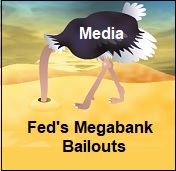-
Recent Posts
- Trump’s “Big Beautiful Bill” Is a Grotesque Giveaway to Fossil Fuel Billionaires While Adding $3.3 Trillion to Nation’s Debt
- Senator Chris Murphy Charges that Trump “Has Opened a Channel for Bribery”
- Congressman Casten: Trump’s Assault on the Rule of Law Is Causing Capital Flight Out of U.S. by Foreign Investors
- Trump’s Approval Rating Drops to 80-Year Low; IMF Says U.S. Tariffs Now Exceed the Highs During the Great Depression
- Nasdaq Has Lost More than 3,000 Points Since Trump’s First Full Day in Office in 2025; the Pain Has Barely Begun
- The Bond Crisis Last Week Was a Global No-Confidence Vote in U. S. President Donald Trump
- Trump’s Tariff Plan Guts $5 Trillion in Stock Value in Two Days; Senator Warren Calls for Emergency Action Before Markets Open on Monday
- Trump’s Attacks on Big Law, Universities, and the Media Have a Common Goal: Silence Dissent Against Authoritarian Rule
- Trump Administration Gives All Clear to Laundering Money through Shell Companies and Bribing Foreign Officials
- Four Megabanks on Wall Street Hold $3.2 Trillion in Uninsured Deposits – Which May Explain Senator Schumer’s Pivot to the GOP to Stop a Government Shutdown
- Here’s What Came Crashing Down Yesterday for Trump’s “Genius” Guy, Elon Musk: Tesla Stock, Access to Twitter (X), His Years of Secret Calls with Putin
- After Banning the Associated Press, Trump Is Now Targeting Specific Journalists That He Wants to See Fired
- Closely Watched Atlanta Fed Model Predicts Negative U.S. Growth in First Quarter
- Trump’s Gangster Diplomacy Makes Front Page Headlines Around the Globe
- Who Benefits Alongside Elon Musk If He Succeeds in Killing the CFPB: the Megabanks on Wall Street that Underwrite His Tesla Stock Offerings
- In Trump 1.0, the State Department Used Taxpayer Money to Publish a Book Elevating Elon Musk to a Superhero; It Was Funded by USAID, the Agency Musk Wants to Quickly Shut Down
- News Host Joy Reid Raises Threat of Trump Selling U.S. to Putin; Ten Days Later Her Show Is Cancelled
- Elon Musk’s DOGE Appears to Be Violating a Court Order; It Has Taken Down Hundreds of YouTube Videos that Educate Americans on How to Avoid Being Swindled
- Barron’s Releases Audio of Jamie Dimon Cursing Out His Workers at a Town Hall, as Dimon Plans to Dump Another One Million JPM Shares
- There’s One Federal Investigative Agency that Neither Trump nor Elon Musk Can Touch: It Just Opened an Investigation into DOGE
- Elon Musk’s Companies Were Under Investigation by Five Inspectors General When the Trump Administration Fired Them and Made Musk the Investigator
- Donald Trump Gives the Greenlight to Goldman Sachs and JPMorgan Chase to Return to Bribing Foreign Officials
- After Tech Geeks Built a Back Door to Loot Billions from FTX, Republicans Refuse to Investigate What Elon Musk’s Tech-Squad Did Inside the U.S. Treasury’s Payment System
- Former Prosecutor, Now U.S. Senator, Informs Tesla That CEO Musk May Be Violating Federal Law and to “Preserve All Records”
- Trump’s Hedge Fund Guy Is Now Overseeing the U.S. Treasury, IRS, OCC, U.S. Mint, FinCEN, F-SOC, and the Consumer Financial Protection Bureau
- As Elon Musk Begins Shutting Down Payments to Federal Contractors, a Strange Money Trail Emerges to His Operatives Inside the U.S. Treasury’s Payment System
- JPMorgan Chase Charged by Yet Another Internal Whistleblower with Cooking the Books
- We Asked Google’s AI Search Model, Gemini, Questions About the Fed and Wall Street Megabanks: It Got the Answers Dead Wrong
- With Trump and Melania’s Crypto Coins Likely to Raise Legal Challenges, Why Didn’t Trump Fire the SEC’s Inspector General in His Purge of IGs?
- Fossil Fuel Industry Could End Up Paying Tens of Billions for LA Wildfires and Deceiving the Public on Climate Change for Decades
- It’s Being Called the Biggest Grift by a President in U.S. History: Trump and First Lady Launch their Own Crypto Coins
- Trump Plans to Install a Fracking CEO to Head the Energy Department and Declare a National Emergency on Energy to Gain Vast Powers
- Fossil Fuel Money Played a Role in the Los Angeles Fires and the Push to Install Pete Hegseth as Secretary of Defense
- When It Comes to Wealth Retention in Retirement, Concrete May Be the New Gold
- Wall Street Watchdog Warns “Clock Is Ticking on a Coming Catastrophic Financial Crash”
- Wall Street Is Sending the Same Message to Americans on Fossil Fuel Financing that It Sent on Cigarettes: Drop Dead
- In a Six-Week Span, this Dark Pool with a Curious Past Traded 3.7 Billion Shares
- Wall Street’s Lobby Firm Hired Eugene Scalia of Gibson Dunn to Sue the Fed for Jamie Dimon
- Postmaster General Louis DeJoy Made $561,051 in Compensation in 2024, as Mail Costs Spiked and Delivery Deteriorated
- Fed Chair Jay Powell Sends a Bold Message to Trump and Tanks the Dow by 1123 Points
- The Head of Fixed Income at T. Rowe Price Makes the Scary Case for the 10-Year Treasury to Spike to 6 Percent
- $663 Billion in Cash Assets Have Gone Poof at the Largest U.S. Banks
- Donald Trump to Ring Bell at New York Stock Exchange Today as Hit List Posters Appear in Manhattan Targeting Wall Street CEOs
- Trump Has a Slush Fund to Prop Up the Dollar – Will He Use It to Prop Up Bitcoin Instead?
- A CEO Assassination; a Billionaire Heiress/NYPD Commissioner; a Secret Wall Street Spy Center – Here’s How They’re Connected
- Despite More than 1600 Tech Scientists Signing a Letter Calling Crypto a Sham, Trump Names a Crypto Cheerleader for SEC Chair
- The Fed Rings a Warning Bell: Hedge Funds and Life Insurers Are Reporting Historic Leverage
- Trump’s Nominee for FBI Director, Kash Patel, Has Businesses Financially Intertwined with Trump
- Donald Trump Is at Risk of Getting Named in a Fossil Fuels Conspiracy Lawsuit
- Trump Is Having Difficulty Getting a Lawyer to Accept the Nomination for SEC Chair: Here’s Why
Search Results for: Federal Reserve
Using Koch Money, Cato Institute Has Led the Drumbeat to Denigrate and Privatize the U.S. Postal Service
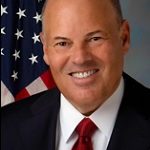
By Pam Martens and Russ Martens: August 19, 2020 ~ The first thing you need to know about the right-wing Cato Institute is that it quietly began its life as the Charles Koch Foundation in 1974. The name was changed to the Cato Institute in 1977 according to the restated articles of incorporation. For decades, the Cato Institute enjoyed a taxpayer subsidy as a nonprofit while being secretly owned by a handful of men, two of whom were the fossil fuel billionaire brothers, Charles and David Koch – libertarians with a radical agenda. (David Koch died in August of last year.) The second thing to know about the Cato Institute is that over the past 35 years, Koch-related foundations have pumped more than $22 million into its coffers to help Cato get out its messaging of killing off the following: Social Security; federally-subsidized school lunches; the minimum wage; collective bargaining; … Continue reading
Aid to “Badly Managed” States Versus Aid to “Badly Managed” Wall Street Banks
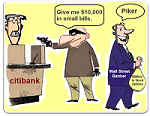
By Pam Martens and Russ Martens: August 14, 2020 ~ According to the official press briefing transcript on August 8, President Donald Trump explained the stalemate between his administration and the Democrats in passing the latest stimulus bill as follows: “…what the Democrats primarily want is bailout money. It has nothing to do with the China virus. It has nothing to do with anything that we’ve been talking about over the last period of time. They want to bailout states that have been badly managed by Democrats, badly run by Democrats for many years — and, in fact, in all cases, many decades. And we’re not willing to do that.” But according to the U.S. Government’s Bureau of Economic Analysis, two of the states making outsized contributions to the GDP of the United States are California and New York. They are just two states out of a total of 50 … Continue reading
Wall Street Banks Sell Off in Midst of Largest Treasury Auction in History

By Pam Martens and Russ Martens: August 13, 2020 ~ The Federal Reserve has thrown everything just short of the kitchen sink at propping up the mega banks on Wall Street – the same ones that were never prosecuted for their fraudulent issuance of mortgage securities and causing the worse economic crash since the Great Depression in 2008. (The Fed bailed the same banks out back then also – to the tune of $29 trillion in cumulative loans.) But yesterday’s market action suggests that something is definitely amiss. The S&P 500 index closed at 3380, just 7 points away from topping its all-time high of 3386 that it set on February 19 of this year. The Dow also gained 289.9 points on the day. But now look at the chart above. There was a sea of red in the Wall Street bank stocks. While the losses in Citigroup, Bank of America, … Continue reading
Wall Street Banks Are Dangerously Evading U.S. Derivatives Rules by Making Trades at Foreign Subsidiaries

By Pam Martens and Russ Martens: August 12, 2020 ~ On May 30, with little mainstream media attention, four European academics published a report on how some of the largest Wall Street banks (all of whom received massive amounts of secret Federal Reserve bailout money during the 2007 to 2010 financial crash) were shamelessly gaming the system again. Rather than complying with the derivatives regulations imposed under the Dodd-Frank financial reform legislation of 2010, the Wall Street mega banks had simply moved much of their interest rate derivatives trading to their foreign subsidiaries that fall outside of U.S. regulatory reach. This is known as regulatory arbitrage: seeking the most lightly regulated jurisdiction to ply your dangerous trading activity. (Think JPMorgan’s London Whale fiasco.) The European academics are Pauline Gandré, Mike Mariathasan, Ouarda Merrouche and Steven Ongena. The paper is titled: “Regulatory Arbitrage and the G20’s Global Derivatives Market Reform.” The researchers discovered … Continue reading
Bombshell Report: Fed Is Aware that Big Banks Are Rigging their Stress Tests and Letting Them Get Away with It

By Pam Martens and Russ Martens: August 11, 2020 ~ On January 31 of this year, researchers for the Federal Reserve released a study that showed that the largest banks operating in the U.S. have been gaming their stress test results by intentionally dropping their exposure to over-the-counter derivatives in the fourth quarter. The fourth quarter data is the information used by the Federal Reserve to determine surcharges on capital for Global Systemically Important Banks, or G-SIBs. The report, “How Do U.S. Global Systemically Important Banks Lower Their Capital Surcharges?,” was written by Jared Berry, Akber Khan, and Marcelo Rezende. We decided to evaluate this claim for ourselves, using the quarterly derivative reports provided by the Office of the Comptroller of the Currency (OCC), the regulator of national banks. The data was appalling. The largest Wall Street banks not only dropped their level of derivatives by trillions of dollars in the fourth … Continue reading
Fed Chair Powell Had 4 Private Phone Calls with BlackRock’s CEO Since March as BlackRock Manages Upwards of $25 Million of Powell’s Personal Money and Lands 3 No-Bid Deals with the Fed

By Pam Martens and Russ Martens: August 7, 2020 ~ Earlier this year, Wall Street On Parade reported that the Chairman of the Federal Reserve, Jerome Powell, had an upward range of $11.6 million invested with the investment management firm, BlackRock, and its iShares Exchange Traded Funds, according to Powell’s 2019 financial disclosure form. Powell’s 2020 financial disclosure form is now available. It was signed by Powell on May 15, 2020 and it shows that Powell’s holdings in BlackRock investments have reached an upward range of $24.95 million – an increase of $13.35 million over the prior year’s upward range. (See Editor’s note below.) The date that Powell signed his latest financial disclosure, May 15, is noteworthy. It means that more than 45 days after the New York Fed had hired BlackRock to manage its commercial mortgage-backed securities program and its $750 billion primary and secondary purchases of corporate bonds … Continue reading
The Fed Created an Emergency Lending Program to Hold Interest Rates Down; the Tiny Country of Sri Lanka Was the Major User
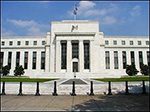
By Pam Martens and Russ Martens: August 6, 2020 ~ At Fed Chairman Jerome Powell’s press conference on July 29, he persisted in his explanation that all of the Fed’s bailout programs are really about helping the American people get back on their feet. Here’s one more, among a growing mountain, of reasons to question that. Sri Lanka is an island country situated in the Indian Ocean and located about 9,000 miles from the United States. Its population of approximately 21 million ranks it the size of the state of Florida. Despite those statistics, Sri Lanka somehow became the main participant in an emergency lending facility set up by the Fed. According to an official statement by the Central Bank of Sri Lanka (CBSL), “the CBSL has decided to pledge a sum of USD 1 billion worth of US Treasury Bonds held in the CBSL reserve and enter into the … Continue reading
Wall Street Banks that Got the Biggest Fed Bailouts Have Been Dogs to Shareholders Over the Past 15 Years
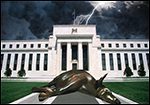
By Pam Martens and Russ Martens: August 5, 2020 ~ Federal Reserve Chairman Jerome Powell wants Americans to believe that the mega banks on Wall Street that hold trillions of dollars in federally-insured deposits, while peddling everything from high-risk derivatives to junk bonds to precious metals, “are a source of strength” during this economic downturn. The big problem for the Fed is the above two charts. The chart data comes from BigCharts at MarketWatch, owned by Dow Jones & Company. According to the first chart, Citigroup has lost 90 percent of its share value since January 3, 2005. (It dressed up its share price in 2011, doing a 10-for-1 reverse stock split, meaning shareholders who had previously owned 100 shares, now owned just 10 shares at a higher price.) Bank of America’s share price has lost half of its value and Morgan Stanley’s share price has been essentially flat for … Continue reading
Memo to Biden: Cut Your Ties to Larry Summers
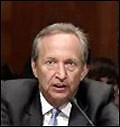
By Pam Martens and Russ Martens: August 4, 2020 ~ David Sirota has read the collective mind of progressives when it comes to Presidential candidate Joe Biden. On August 1 Sirota Tweeted: “Give us an anti-Wall Street Treasury Secretary and AG [Attorney General], and you can have your sh*tty VP…On the other hand, give us a sh*tty Treasury Secretary and AG and try to paper it over with a good VP, and you’ve basically given everyone the big middle finger.” There is growing concern about Biden among progressives because he has made the decidedly ill-advised move of using the infamous Larry Summers as an advisor. Summers is the man who played an outsized role in the creation of Frankenbanks on Wall Street in 1999 with his push to repeal the Glass-Steagall Act and the deregulation of derivatives in 2000 as Treasury Secretary in the Clinton administration. Carrying on the proud … Continue reading
The Fed Has Secreted Away the Transactions of Three of Its Emergency Lending Programs
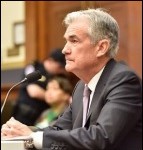
By Pam Martens and Russ Martens: August 3, 2020 ~ Federal Reserve Chairman Jerome Powell and Randal Quarles, the Vice Chairman for Supervision at the Fed, have stated in testimony before Congress that they would be providing transaction level details of their Section 13(3) Emergency Lending Facilities on a regular, ongoing basis. But the three oldest of those facilities, the Primary Dealer Credit Facility (PDCF), the Commercial Paper Funding Facility (CPFF), and the Money Market Mutual Fund Liquidity Facility (MMLF), which were all created more than four months ago in mid-March, have yet to release any transaction level details to the public. The Fed is required to provide reports every 30 days on its emergency lending facilities. Those reports are located at this Fed website. If you scroll down, you will find that transaction level reports have been provided for four of the Fed’s emergency lending programs. But the three programs … Continue reading

